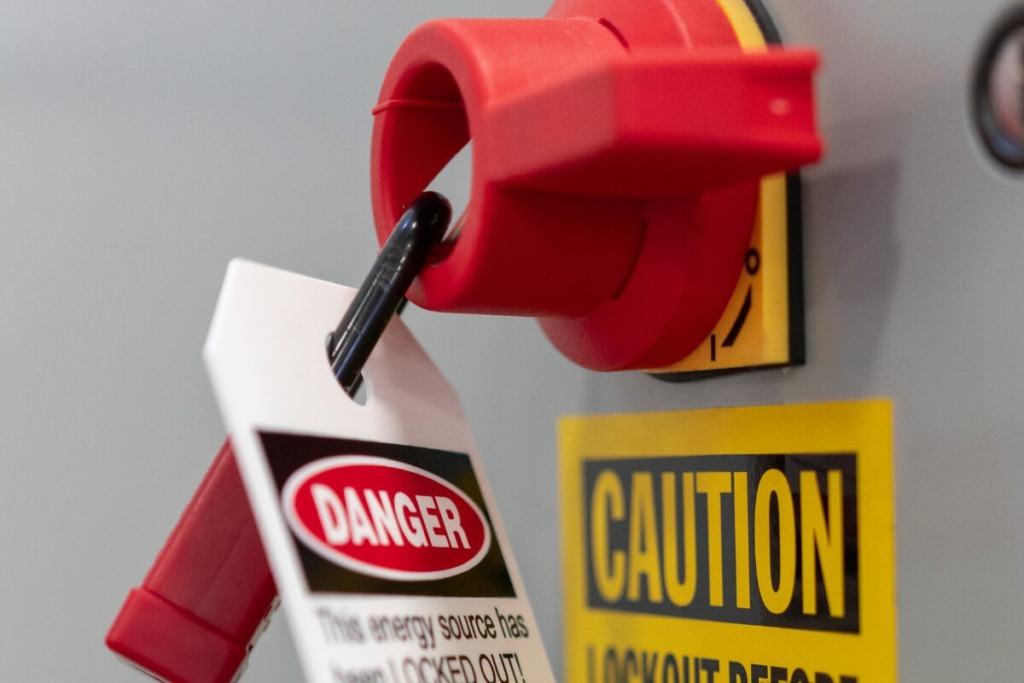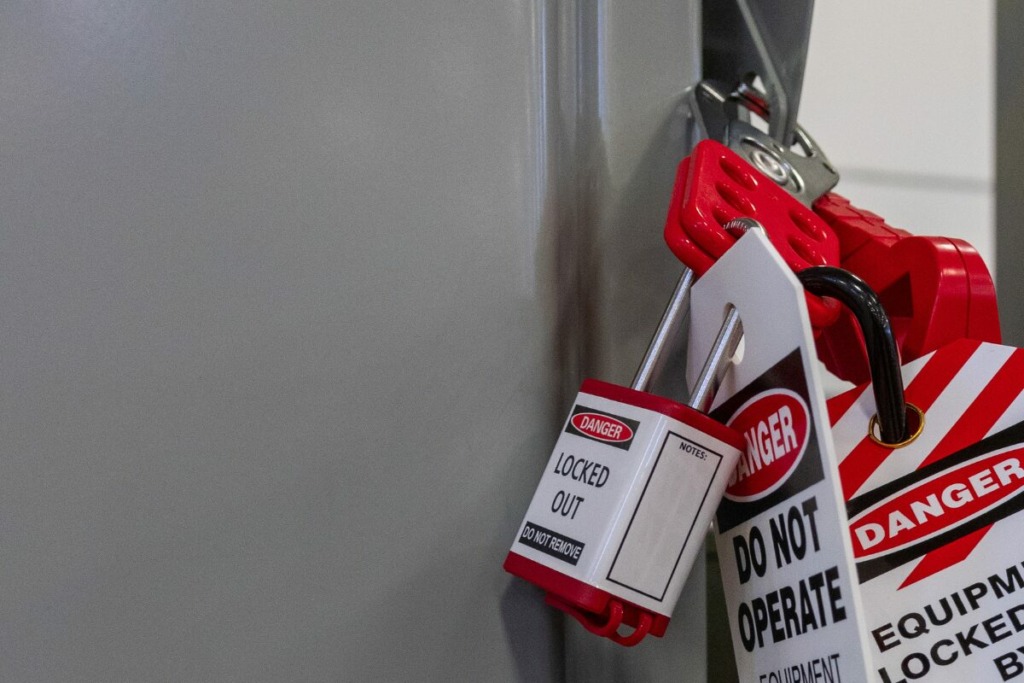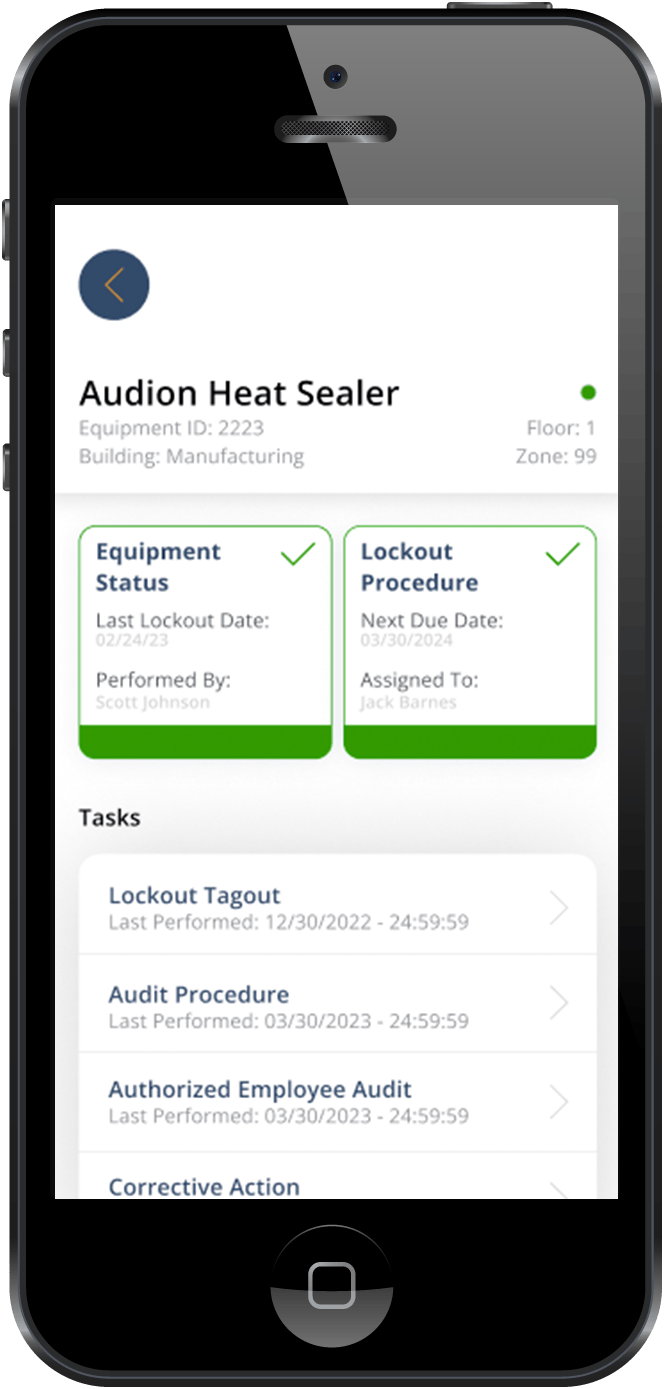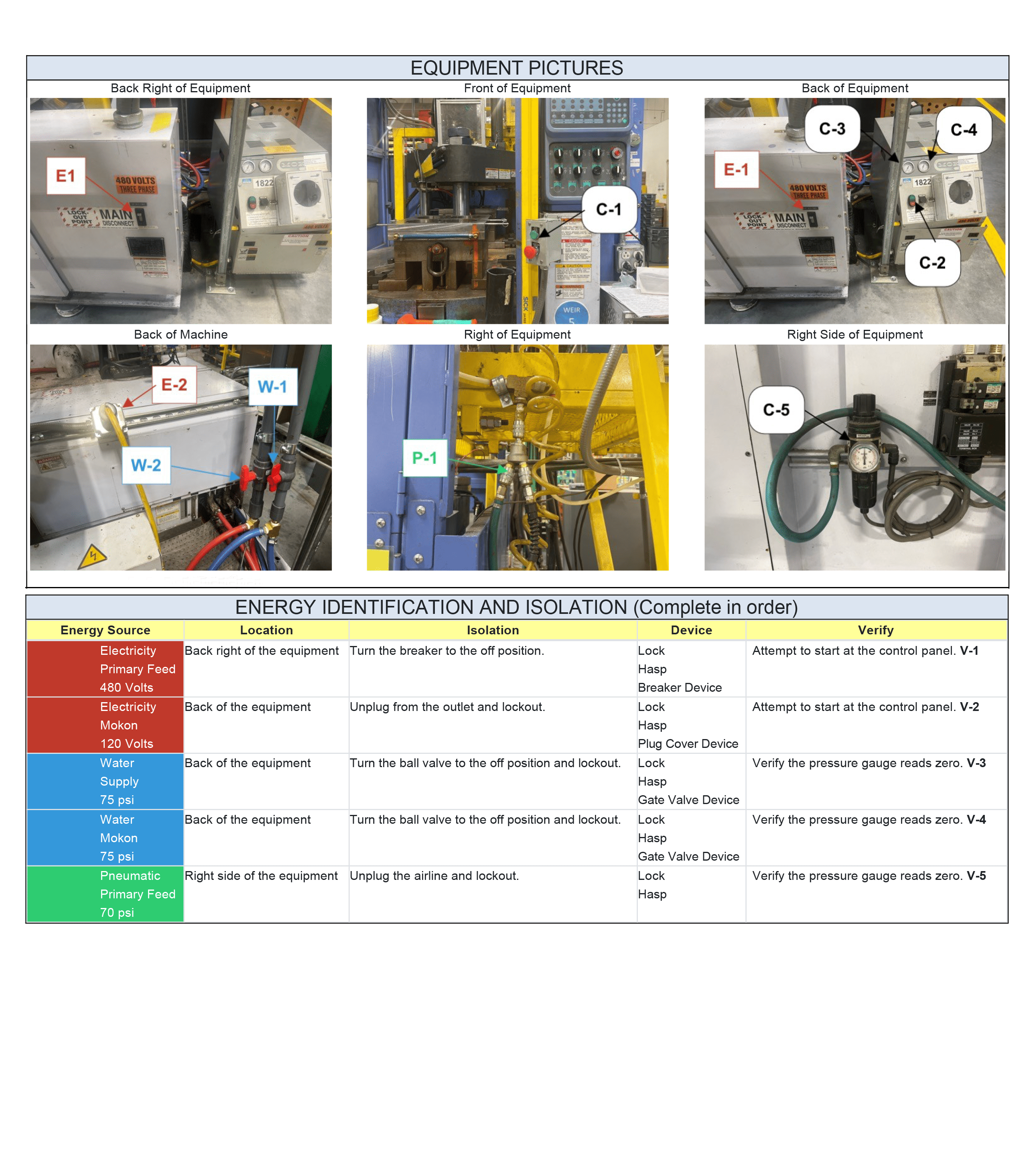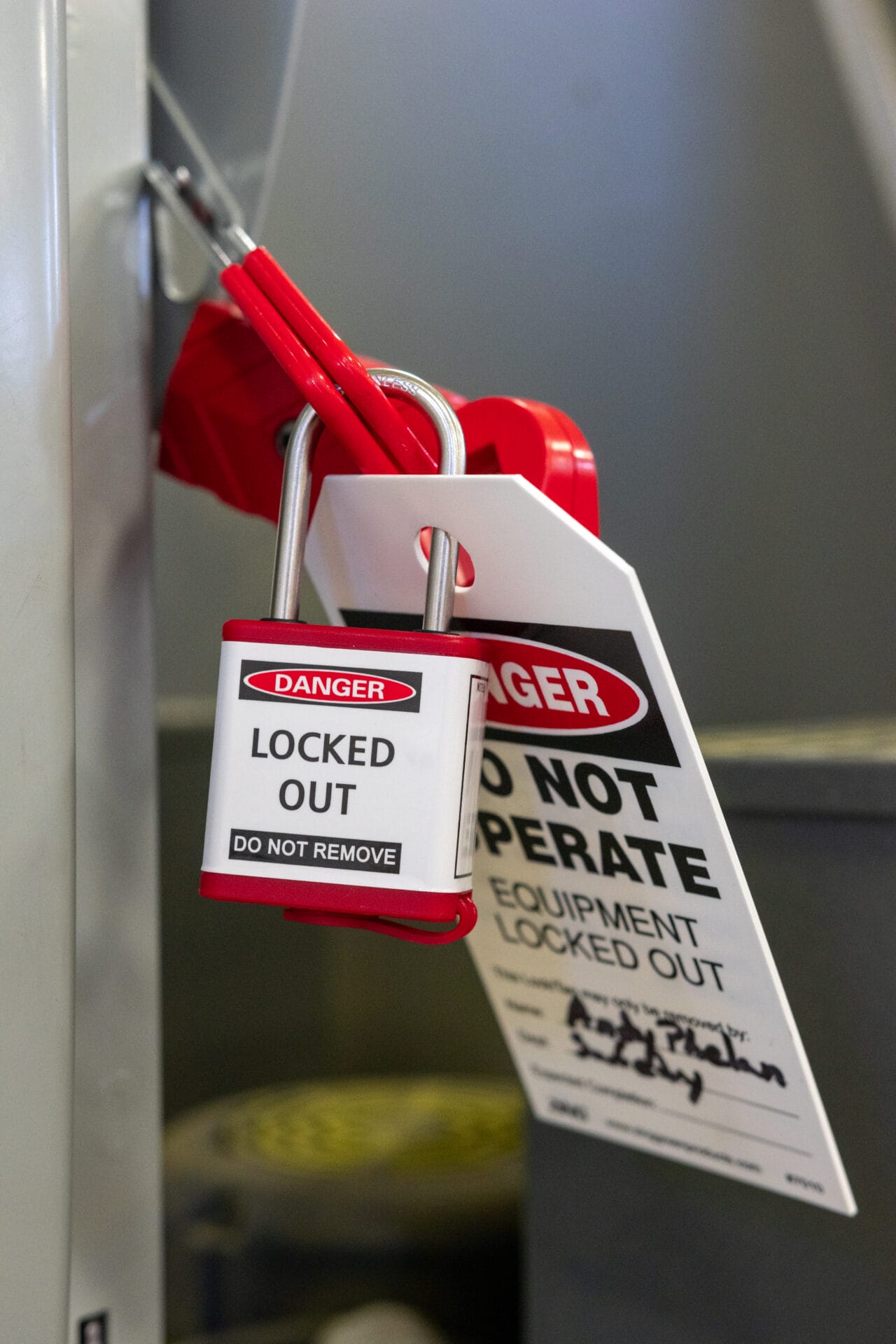Learn how to set up lockout tagout procedures for your flash master to ensure electrical safety and OSHA compliance in 5 simple steps.
If your facility uses a flash master, you’re already taking critical steps toward improving safety and control during high-energy electrical work. But owning the right equipment is only part of the equation. To truly protect your team and remain compliant with OSHA’s 1910.147 standard, it’s essential to implement a machine-specific Lockout/Tagout (LOTO) procedure!
This article walks you through the key steps for setting up a proper LOTO program for your flash master, helping ensure safety, reduce downtime, and avoid costly OSHA violations.
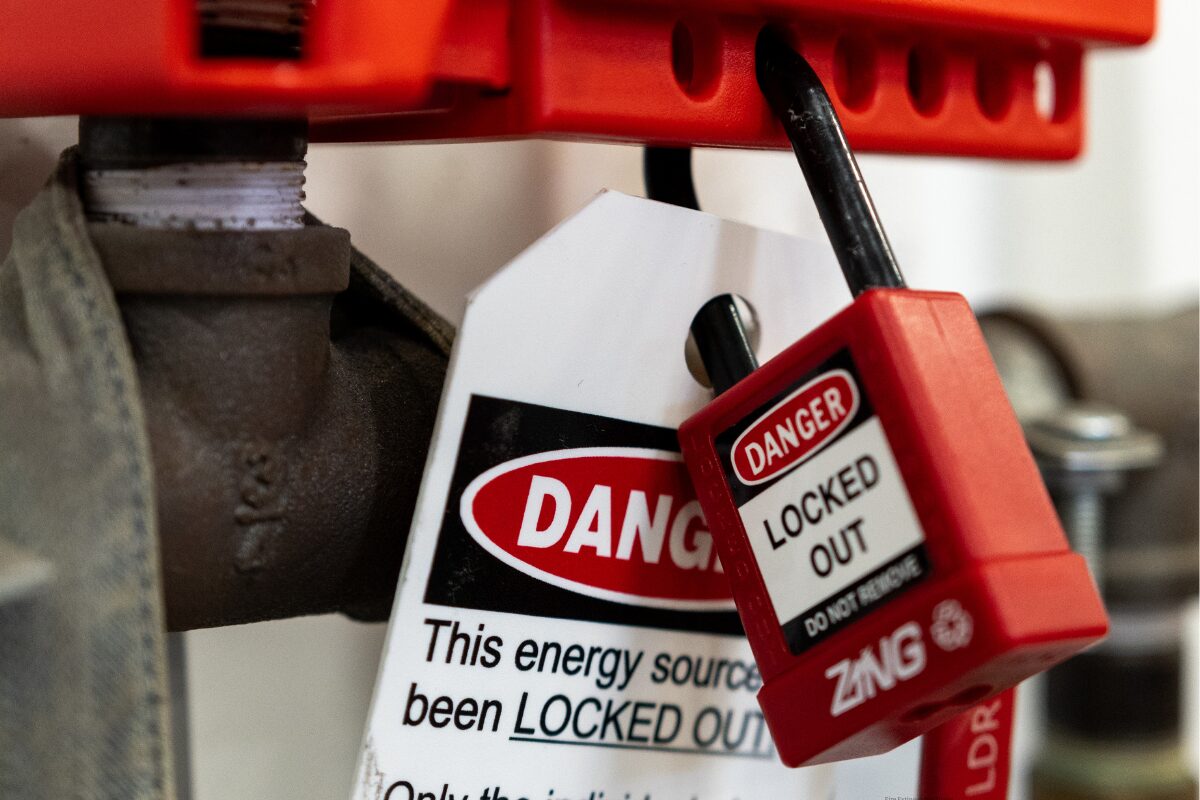
What is a Flash Master?
A flash master is a specialized piece of electrical equipment often used in industrial and commercial settings to simulate or trigger flash events, test electrical systems, or isolate energy.
Because these settings often deal with high voltage, they pose significant electrical hazards if not properly controlled during maintenance or servicing.
That’s where Lockout/Tagout comes in.
Why LOTO Matters for Flash Masters
LOTO procedures are designed to control hazardous energy during servicing and maintenance, which is especially important for electrical energy sources. If your flash master isn’t properly de-energized and isolated, workers could suffer electric shock, arc flash burns, or even fatal electrocution.
these devices typically fall into the category of electrical energy sources under OSHA guidelines, meaning they must be included in a comprehensive LOTO program—complete with documentation, physical isolation methods, and employee training.
Step 1: Identify All Energy Sources
The first step in setting up LOTO for your flash master is to identify all energy sources connected to the unit. This includes:
- Main power supply (AC/DC circuits)
- Backup generators or UPS systems
- Stored energy like capacitors
- Remote triggering systems
Each energy source should be listed on your machine-specific procedure, along with the method of isolation.
Step 2: Develop a Machine-Specific LOTO Procedure
Generic LOTO checklists won’t cut it. You need a machine-specific procedure tailored to your flash master model, layout, and integration.
These are not limited to, but include:
- Equipment identification (model, serial number, location)
- Step-by-step shutdown instructions
- Location of each energy isolation point
- Type of lockout device to use (breaker lock, plug cover, etc.)
- Verification steps (how to test that energy is controlled)
For software-driven systems like Smart Safety Pro, these procedures can be digitized and linked via QR code directly on the flash master for real-time access.
Step 3: Install LOTO Devices on Isolation Points
Once energy sources are identified, physically install lockout devices:
- Use circuit breaker locks to isolate incoming power
- Plug lockout devices for portable flash masters
- Lockout battery terminals if applicable
- Tag each lock with the authorized employee’s name, contact info, and the date
Each isolation point on the flash master must be secured with an OSHA-compliant device that prevents accidental re-energization.
Step 4: Train Authorized and Affected Employees
No LOTO program is complete without training. For flash masters, you need to ensure:
- Authorized employees know how to perform lockout on the specific model
- Affected employees understand not to remove tags or attempt restarts
- Training is documented and repeated annually, or when procedures change
Step 5: Verify and Audit the Procedure
Before beginning any work on the flash master, always verify zero energy state using proper testing equipment. In addition, schedule annual audits of your LOTO procedures to ensure ongoing compliance.
Digitized systems like Smart Safety Pro automatically flag missed steps and provide audit trails, making it easier to prove compliance during inspections.
Common Flash Master LOTO Mistakes to Avoid
- Skipping verification steps: Always test before you touch.
- Not including remote energy sources: Some flash masters are triggered externally.
- Inconsistent procedures: Different models need tailored LOTO plans.
- Outdated documentation: Keep procedures current when equipment or workflows change.

Stay Compliant, Stay Safe
Whether your facility uses a single flash master or multiple units across departments, each device must have its own lockout procedure. With serious arc flash and shock risks at stake, proper LOTO not only protects workers, it protects your business; request a demo!
Using a digital LOTO system like Smart Safety Pro can help you easily create, maintain, and access machine-specific procedures for every flash master in your facility. It simplifies compliance, reduces human error, and improves overall safety performance.
Final Thoughts
The setup of Lockout/Tagout for a flash master may seem complex at first, but when broken down step-by-step, it becomes a manageable and repeatable process. With proper documentation, training, and device installation, you’ll create a safer work environment and dramatically lower the risk of electrical accidents.
Don’t wait until OSHA comes knocking—start building your flash master LOTO procedures today.
Check out some of our other articles for more information on lockout tagout procedures:


